Taxidermy4Cash.com
Taxidermy in the UK
We are always very interested in Purchasing Victorian Taxidermy, please respond via this on-line form of what you have for sale. HERE
Richard Owen.
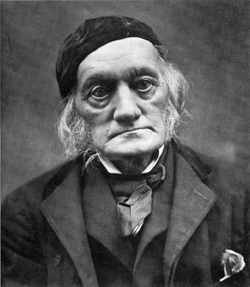
(1804-1892)
Owen was born in Lancaster and educated at Lancaster Royal Grammar School. In 1820, he was apprenticed to a local surgeon and apothecary and, in 1824, he proceeded as a medical student to the University of Edinburgh. He left the university in the following year and completed his medical course in St Bartholomew's Hospital, London, where he came under the influence of the eminent surgeon, John Abernethy.
Owen was the driving force behind the establishment, in 1881, of the British Museum of Natural History in London.
He then contemplated the usual professional career but his bent was evidently in the direction of anatomical research. He was induced by Abernethy to accept the position of assistant to William Clift, conservator of the museum of the Royal College of Surgeons. This congenial occupation soon led him to abandon his intention of medical practice and his life henceforth was devoted to purely scientific labours. He prepared an important series of catalogues of the Hunterian collection, in the Royal College of Surgeons and, in the course of this work, he acquired the unrivalled knowledge of comparative anatomy, which enabled him to enrich all departments of the science and especially facilitated his researches on the remains of extinct animals.
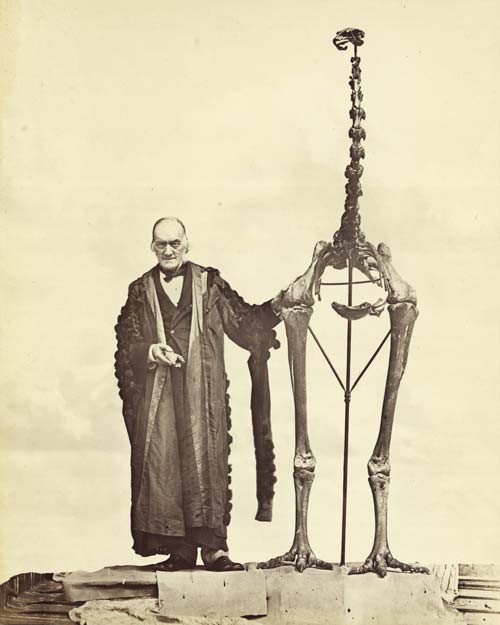
Richard Owen with completed Moa skeleton
In 1836, Owen was appointed Hunterian professor, in the Royal College of Surgeons and, in 1849, he succeeded Clift as conservator. He held the latter office until 1856, when he became superintendent of the natural history department of the British Museum. He then devoted much of his energies to a great scheme for a National Museum of Natural History, which eventually resulted in the removal of the natural history collections of the British Museum to a new building at South Kensington: the British Museum of Natural History (now the Natural History Museum). He retained office until the completion of this work, in 1884, when he was made a knight of the Order of the Bath. He lived quietly in retirement at Sheen Lodge, Richmond Park, until his death in 1892.
His career was tainted by accusations that he failed to give credit to the work of others and even tried to appropriate it in his own name. This came to a head in 1846, when he was awarded the Royal Medal for a paper he had written on belemnites. Owen had failed to acknowledge that the belemnite had been discovered by Chaning Pearce, an amateur biologist, four years earlier. As a result of the ensuing scandal, he was voted off the councils of the Zoological Society and the Royal Society.
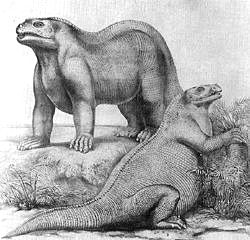
Richard Owen coined the phrase "Dinosaur"
Owen's drawings
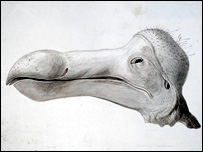
Richard Owen's drawing of a Dodo
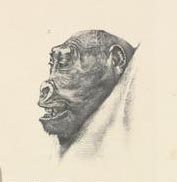
Richard Owen's drawing of a Gorilla
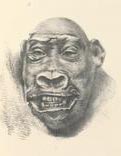
Richard Owen's drawing of a Gorilla. This drawing looks like the ape taxidermied by De-Bartlett.
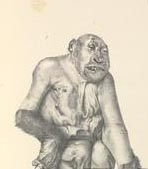
Richard Owen's drawing of a Gorilla
Owen always tended to support orthodox men of science and the status quo. The royal family presented him with the cottage in Richmond Park and Robert Peel put him on the Civil List.
Following the voyage of the Beagle, Darwin had at his disposal a considerable collection of specimens and, on 29 October 1836, he was introduced by Charles Lyell to Owen, who agreed to work on fossil bones collected in South America. Owen's subsequent revelations, that the extinct giant creatures were rodents and sloths, showed that they were related to current species in the same locality, rather than being relatives of similarly sized creatures in Africa, as Darwin had originally thought. This was one of the many influences which led Darwin to later formulate his own ideas on the concept of natural selection.
At this time, Owen talked of his theories, influenced by Johannes Peter Müller, that living matter had an "organising energy", a life-force that directed the growth of tissues and also determined the lifespan of the individual and of the species. Darwin was reticent about his own thoughts, understandably, when, on 19 December 1838, as secretary of the Geological Society of London, he saw Owen and his allies ridicule the Lamarckian 'heresy' of Darwin's old tutor, Robert Edmund Grant. In 1841, when the recently married Darwin was ill, Owen was one of the few scientific friends to visit; however, Owen's opposition to any hint of transmutation made Darwin keep quiet about his hypothesis.
![thomashuxley [640x480].jpg](thomashuxley [640x480].jpg)
Thomas Henry Huxley
During the development of Darwin's theory, his investigation of barnacles showed, in 1849, how their segmentation related to other crustaceans, showing how they had diverged from their relatives. To Owen such "homologies" in comparative anatomy showed "archetypes" in the Divine mind but to Darwin this was evidence of descent. Owen demonstrated fossil evidence of an evolutionary sequence of horses, as supporting his idea of development from archetypes in "ordained continuous becoming" and, in 1854, gave a British Association talk on the impossibility of bestial apes, such as the recently discovered gorilla, standing erect and being transmuted into men. Working class militants were trumpeting man's monkey origins[. To crush these ideas, Owen, as President-elect of the Royal Association, announced his authoritative anatomical studies of primate brains, claiming that the human brain had structures that apes brains did not, and that therefore humans were a separate sub-class. Darwin wrote that "I cannot swallow Man [being that] distinct from a Chimpanzee". The combative Thomas Henry Huxley used his March 1858 Royal Institution lecture to deny Owen's claim and affirmed that structurally, gorillas are as close to humans as they are to baboons. He believed that the "mental & moral faculties are essentially... the same kind in animals & ourselves". This was a clear denial of Owen's claim for human uniqueness, given at the same venue.
![oldbonesvanityfair1860 [640x480].jpg](oldbonesvanityfair1860 [640x480].jpg)
Richard Owen depicted in Vanity Fair's 1860 edition, "Old Bones"
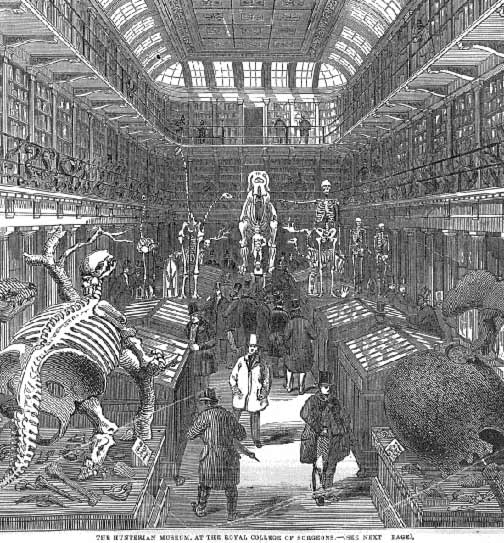
Huntarian Museum
On the publication of Darwin's theory, in On The Origin of Species, he sent a complimentary copy to Owen, saying "it will seem 'an abomination'". Owen was the first to respond, courteously claiming that he had long believed that "existing influences" were responsible for the "ordained" birth of species. Darwin now had long talks with him and Owen said that the book offered the best explanation "ever published of the manner of formation of species", although he still had the gravest doubts that transmutation would bestialize man. It appears that Darwin had assured Owen that he was looking at everything as resulting from designed laws, which Owen interpreted as showing a shared belief in "Creative Power".
As head of the Natural History Collections at the British Museum, Owen received numerous inquiries and complaints about the Origin. His own views remained unknown: when emphasising to a Parliamentary committee the need for a new Natural History museum, he pointed out that "The whole intellectual world this year has been excited by a book on the origin of species; and what is the consequence? Visitors come to the British Museum, and they say, "Let us see all these varieties of pigeons: where is the tumbler, where is the pouter?" and I am obliged with shame to say, I can show you none of them".... As to showing you the varieties of those species, or of any of those phenomena that would aid one in getting at that mystery of mysteries, the origin of species, our space does not permit; but surely there ought to be a space somewhere, and, if not in the British Museum, where is it to be obtained?"
However, Huxley's attacks were making their mark. In April 1860 the Edinburgh Review included Owen's anonymous review of the Origin. In it Owen showed his anger at what he saw as Darwin's caricature of the creationist position, and his ignoring Owen's "axiom of the continuous operation of the ordained becoming of living things". As well as attacking Darwin's "disciples", Hooker and Huxley, for their "short-sighted adherence", he thought that the book symbolised the sort of "abuse of science... to which a neighbouring nation, some seventy years since, owed its temporary degradation" in a reference to the French Revolution. Darwin thought it "Spiteful, extremely malignant, clever, and... damaging" and later commented that "The Londoners say he is mad with envy because my book is so talked about.
![Hunterian+museum[1] .JPG](Hunterian+museum[1] .JPG)
Huntarian Museum
It is painful to be hated in the intense degree with which Owen hates me."
During the reaction to Darwin's theory, Huxley's arguments with Owen continued. Owen tried to smear Huxley, by portraying him as an "advocate of man's origins from a transmuted ape" and one of his contributions to the Athenaeum was titled "Ape-Origin of Man as Tested by the Brain". In 1862 (and on other occasions) Huxley took the opportunity to arrange demonstrations of ape brain anatomy (e.g. at the BA meeting, where William Flower performed the dissection). Visual evidence of the supposedly missing structures (posterior cornu and hippocampus) was used, in effect, to indict Owen for perjury. The campaign ran over two years and was devastatingly successful, with each "slaying" being followed by a recruiting drive for the Darwinian cause. The spite lingered. When Huxley joined the Zoological Society Council, in 1861, Owen left and, in the following year, Huxley moved to stop Owen from being elected to the Royal Society Council, accusing him "of wilful & deliberate falsehood". (See also Wiki Thomas Henry Huxley page)
In January 1863, Owen bought the Archaeopteryx fossil for the British Museum. It fulfilled Darwin's prediction, that a proto-bird with unfused wing fingers would be found, although Owen described it unequivocally as a bird.
The feuding between Owen and Darwin's supporters continued. In 1871, Owen was found to be involved in a threat to end government funding of Joseph Dalton Hooker's botanical collection, at Kew, possibly trying to bring it under his British Museum. Darwin commented that "I used to be ashamed of hating him so much, but now I will carefully cherish my hatred & contempt to the last days of my life.
Taxidermy4Cash does not undertake taxidermy, rather we are collectors of
other people’s work, both current and historical we also offer web hosting,
a search engine submission service and increasingly one of the larger
article resource banks on the net. So if your keen to learn about Taxidermy
etc, then you know where to look.
We are always interested to here about new resource, if you feel a resource
should be listed here then please contact us.
|
ITEMS
WANTED. Please respond via this on-line form HERE
with a description of what you have for sale.
[HOMEPAGE]
Taxidermy Links.
Please double click on the Taxidermy link icon below.
Taxidermy
Links
|
|








![thomashuxley [640x480].jpg](thomashuxley [640x480].jpg)
![oldbonesvanityfair1860 [640x480].jpg](oldbonesvanityfair1860 [640x480].jpg)
